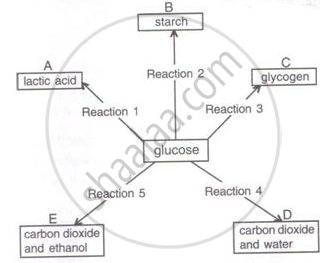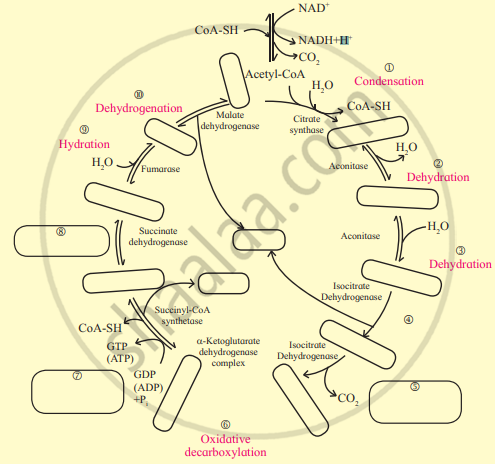Advertisements
Advertisements
Question
Answer the following question.
Write explanatory notes on Fermentation by yeast.
Solution
Alcoholic fermentation is a type of anaerobic respiration where the pyruvate is decarboxylated to acetaldehyde. The acetaldehyde is then reduced by NADH+H+ to ethanol and Carbon dioxide. Since ethanol is produced during the process, it is termed alcoholic fermentation. It is represented as follows:
Alcoholic fermentation-
\[\ce{\underset{\text{Glucose}}{C6H12O6}->[Glyocolysis]\underset{\text{Pyruvic acid}}{2CH3COCOOH}-> CO2↑ + \underset{\text{Acetaldehyde}}{2CH3CHO + 2NADH + H+} ->\underset{\text{Ethanol}}{2C2H5OH}}\]
APPEARS IN
RELATED QUESTIONS
Mention if the following statement is true or false. If false, rewrite them correctly.
All leaves of a green plant normally respire anaerobically at night.
Given below are chemical reactions (1 to 5) involving glucose and five other chemical products (A-E).

Write the reaction number of the following:
(i) Anaerobic respiration in plants __________
(ii) End products in aerobic respiration ____________
(iii) Reaction occurring in liver _________
(iv) Anaerobic respiration in animals ________
(v) Storage in the liver _________
Fill in the blank:
Fermentation is a type of ______ respiration.
Complete the following statement by choosing the correct alternative out of those given below.
Carbon dioxide and water are formed in
The question has four options. Choose the correct answer:
The materials formed in anaerobic respiration are
Identify the cycle given below. Correct it and fill in the blanks and write discription of it in your own words.

______ is the final electron acceptor during aerobic respiration.
____________ results into the conversion of oxalosuccinate into α ketoglutarate involves in Krebs cycle.
Identify the number of 3 carbon compounds formed during glycolysis.
Name the pores in a leaf through which the respiratory exchange of gases takes place.
